Mechanical Properties and Microstructure Evolution of Mg-6 wt % Zn Alloy during Equal-Channel Angular Pressing
Abstract
1. Introduction
2. Materials and Methods
3. Results
3.1. Mechanical Properties
3.2. Microstructure
3.3. Precipitate Behavior
4. Discussion
4.1. Effects of ECAP on the Mechanical Properties of Mg-6Zn Alloy
4.2. Formation Mechanism of Inhomogeneous Grain Structure in Mg-6Zn Alloy during ECAP
4.3. Precipitation Behavior of the Intermetallic Phase in the Mg-6Zn during ECAP
5. Conclusions
- (1)
- ECAP was effective for grain refinement in Mg-6Zn alloy. A bi-modal grain structure formed at low temperatures, which was stable during ECAP at 160 °C and 200 °C.
- (2)
- MgZn2 phase and Mg4Zn7 phase were generated from the Mg-6Zn alloy during the ECAP process.
- (3)
- The mechanical properties increased after two passes of ECAP. During further deformation, the strengths nearly remained constant when processed at 160 °C but decreased when processed at 200 °C and 240 °C.
- (4)
- The mechanical properties of the ECAP Mg-6Zn alloy was determined by a combination of grain refinement strengthening, precipitation hardening, and texture softening.
Author Contributions
Acknowledgments
Conflicts of Interest
References
- Zheng, Y.F.; Gu, X.N.; Witte, F. Biodegradable Metals. Mater. Sci. Eng. R Rep. 2014, 77, 1–34. [Google Scholar] [CrossRef]
- Manivasagam, G.; Suwas, S. Biodegradable Mg and Mg Based Alloys for Biomedical Implants. Mater. Sci. Technol. 2014, 30, 515–520. [Google Scholar] [CrossRef]
- Chen, Y.; Yan, J.; Wang, Z.; Yu, S.; Wang, X.; Yuan, Z.; Zhang, X.; Zhao, C.; Zheng, Q. In vitro and in vivo corrosion measurements of Mg-6Zn alloys in the bile. Mater. Sci. Eng. C Mater. Biol. Appl. 2014, 42, 116–123. [Google Scholar] [CrossRef] [PubMed]
- Jang, Y.; Tan, Z.; Jurey, Z.; Xu, Z.; Dong, Z.; Collins, B.; Yun, Y.; Sankar, J. Understanding corrosion behavior of Mg-Zn-Ca alloys from subcutaneous mouse model: Effect of Zn element concentration and plasma electrolytic oxidation. Mater. Sci. Eng. C 2015, 48, 28–40. [Google Scholar] [CrossRef] [PubMed]
- Langdon, T.G. Twenty-five years of ultrafine-grained materials: Achieving exceptional properties through grain refinement. Acta Mater. 2013, 61, 7035–7059. [Google Scholar] [CrossRef]
- Ma, A.B.; Jiang, J.H.; Saito, N.; Shigematsu, I.; Yuan, Y.C. Improving both strength and ductility of a Mg alloy through a large number of ECAP passes. Mater. Sci. Eng. A 2009, 513–514, 122–127. [Google Scholar] [CrossRef]
- Xu, C.; Furukawa, M.; Horita, Z.; Langdon, T.G. The evolution of homogeneity and grain refinement during equal-channel angular pressing: A model for grain refinement in ECAP. Mater. Sci. Eng. A 2005, 398, 66–76. [Google Scholar] [CrossRef]
- Lin, H.K.; Huang, J.C.; Langdon, T.G. Relationship between texture and low temperature superplasticity in an extruded AZ31 Mg alloy processed by ECAP. Mater. Sci. Eng. A 2005, 402, 250–257. [Google Scholar] [CrossRef]
- Figueiredo, R.B.; Langdon, T.G. Principles of grain refinement and superplastic flow in magnesium alloys processed by ECAP. Mater. Sci. Eng. A 2009, 501, 105–114. [Google Scholar] [CrossRef]
- Song, Y.W.; Han, E.H.; Shan, D.Y.; Yim, C.D.; You, B.S. The effect of Zn concentration on the corrosion behavior of Mg–xZn alloys. Corros. Sci. 2012, 60, 238–245. [Google Scholar] [CrossRef]
- Gao, J.H.; Guan, S.K.; Ren, Z.W.; Sun, Y.F.; Zhu, S.J.; Wang, B. Homogeneous corrosion of high pressure torsion treated Mg–Zn–Ca alloy in simulated body fluid. Mater. Lett. 2011, 60, 691–693. [Google Scholar] [CrossRef]
- Ying, T.; Zheng, M.Y.; Li, Z.T.; Qiao, X.G.; Xu, S.W. Thermal conductivity of as-cast and as-extruded binary Mg–Zn alloys. J. Alloys Compd. 2015, 621, 250–255. [Google Scholar] [CrossRef]
- Tong, L.B.; Zheng, M.Y.; Hu, X.S.; Wu, K.; Xu, S.W.; Kamado, S.; Kojima, Y. Influence of ECAP routes on microstructure and mechanical properties of Mg–Zn–Ca alloy. Mater. Sci. Eng. A 2010, 527, 4250–4256. [Google Scholar] [CrossRef]
- Yan, K.; Sun, Y.S.; Bai, J.; Xue, F. Microstructure and mechanical properties of ZA62 Mg alloy by equal-channel angular pressing. Mater. Sci. Eng. A 2011, 528, 1149–1153. [Google Scholar] [CrossRef]
- Figueiredo, R.B.; Langdon, T.G. Grain refinement and mechanical behavior of a magnesium alloy processed by ECAP. J. Mater. Sci. 2010, 45, 4827–4836. [Google Scholar] [CrossRef]
- Zhao, Z.D.; Chen, Q.; Wang, Y.B.; Shu, D.Y. Effect of predeformation on semi-solid microstructure of ZK60+RE magnesium alloy. Trans. Nonferrous Met. Soc. China 2009, 19, 535–539. [Google Scholar] [CrossRef]
- Luo, S.J.; Chen, Q.; Zhao, Z.D. An investigation of microstructure evolution of RAP processed ZK60 magnesium alloy. Mater. Sci. Eng. A 2009, 501, 146–152. [Google Scholar] [CrossRef]
- Yuan, Y.C.; Ma, A.B.; Gou, X.F.; Jiang, J.H.; Arhin, G.; Song, D.; Liu, H. Effect of heat treatment and deformation temperature on the mechanical properties of ECAP processed ZK60 magnesium alloy. Mater. Sci. Eng. A 2016, 677, 125–132. [Google Scholar] [CrossRef]
- Ding, S.X.; Lee, W.T.; Chang, C.P.; Chang, L.W.; Kao, P.W. Improvement of strength of magnesium alloy processed by equal channel angular extrusion. Scr. Mater. 2008, 59, 1006–1009. [Google Scholar] [CrossRef]
- He, Y.B.; Pan, Q.L.; Qin, Y.J.; Liu, X.Y.; Li, W.B.; Chiu, Y.L.; Chen, J.J. Microstructure and mechanical properties of ZK60 alloy processed by two-step equal channel angular pressing. J. Alloys Compd. 2010, 492, 605–610. [Google Scholar] [CrossRef]
- Valle, J.A.; Ruano, O.A. Superplasticity in a magnesium alloy prepared with bimodal grain size distributions developed by dynamic recrystallisation. Mater. Lett. 2008, 62, 3391–3394. [Google Scholar] [CrossRef]
- Mendis, C.L.; Oh-ishi, K.; Kawamura, Y.; Honma, T.; Kamado, S.; Hono, K. Precipitation-Hardenable Mg–2.4 Zn–0.1 Ag–0.1 Ca–0.16 Zr (at.%) Wrought Magnesium Alloy. Acta Mater. 2009, 57, 749–760. [Google Scholar] [CrossRef]
- Mendis, C.L.; Oh-ishi, K.; Hono, K. Enhanced age hardening in a Mg–2.4 at.% Zn alloy by trace additions of Ag and Ca. Scr. Mater. 2007, 57, 485–488. [Google Scholar] [CrossRef]
- Gao, X.; Nie, J.F. Characterization of strengthening precipitate phases in a Mg–Zn alloy. Scr. Mater. 2007, 56, 645–648. [Google Scholar] [CrossRef]
- Gao, X.; Nie, J.F. Structure and thermal stability of primary intermetallic particles in an Mg–Zn casting alloy. Scr. Mater. 2007, 57, 655–658. [Google Scholar] [CrossRef]
- Singh, A.; Tsai, A.P. Structural characteristics of β1′ precipitates in Mg–Zn-based alloys. Scr. Mater. 2007, 57, 941–944. [Google Scholar] [CrossRef]
- Wei, L.Y.; Dunlop, G.L.; Westengen, H. The intergranular microstructure of cast Mg-Zn and Mg-Zn-rare earth alloys. Metall. Mater. Trans. A 1995, 26A, 1947–1955. [Google Scholar] [CrossRef]
- Xie, Y.P.; Wang, Z.Y.; Hou, Z.F. The phase stability and elastic properties of MgZn2 and Mg4Zn7 in Mg–Zn alloys. Scr. Mater. 2013, 68, 495–498. [Google Scholar] [CrossRef]
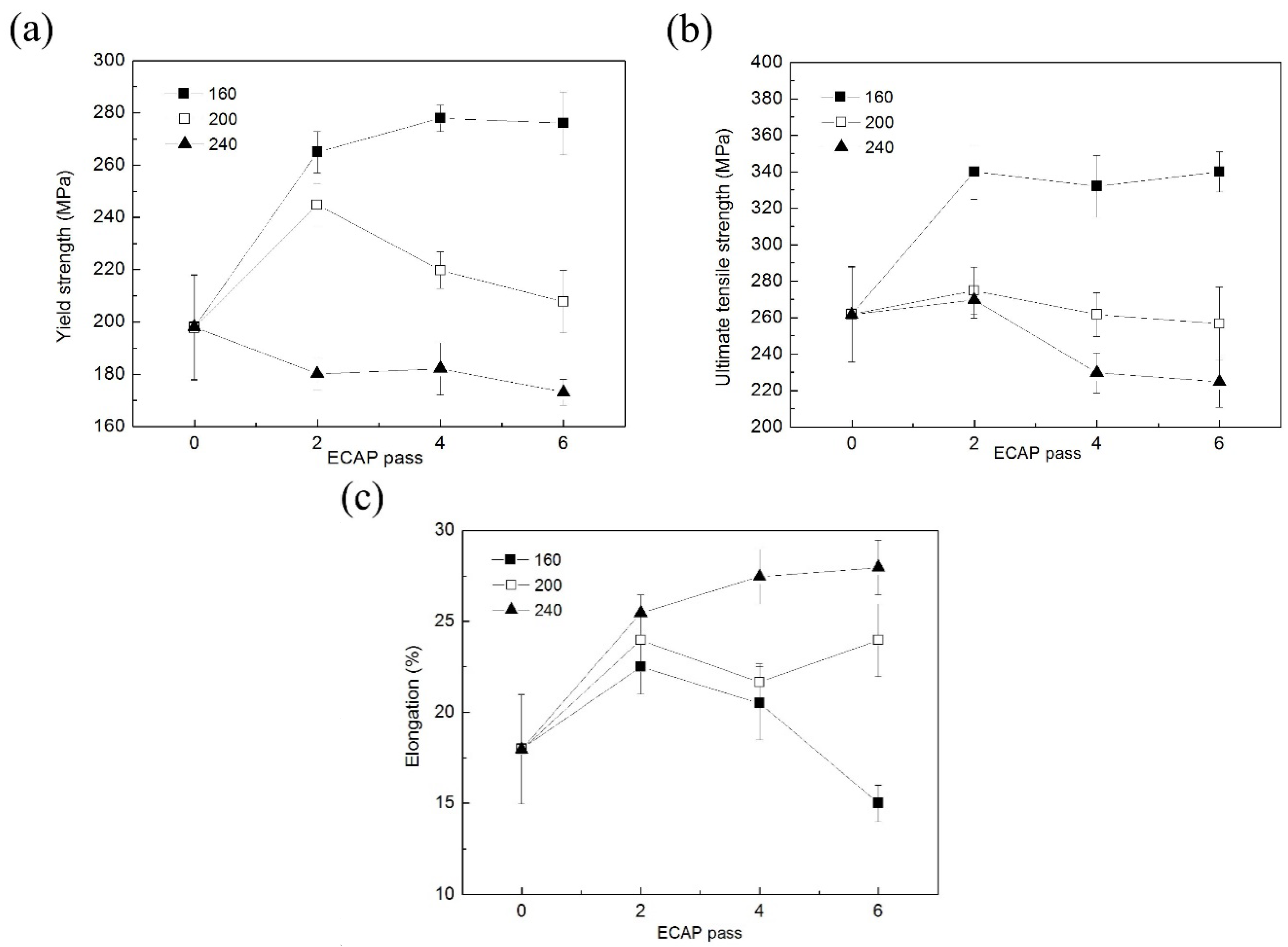
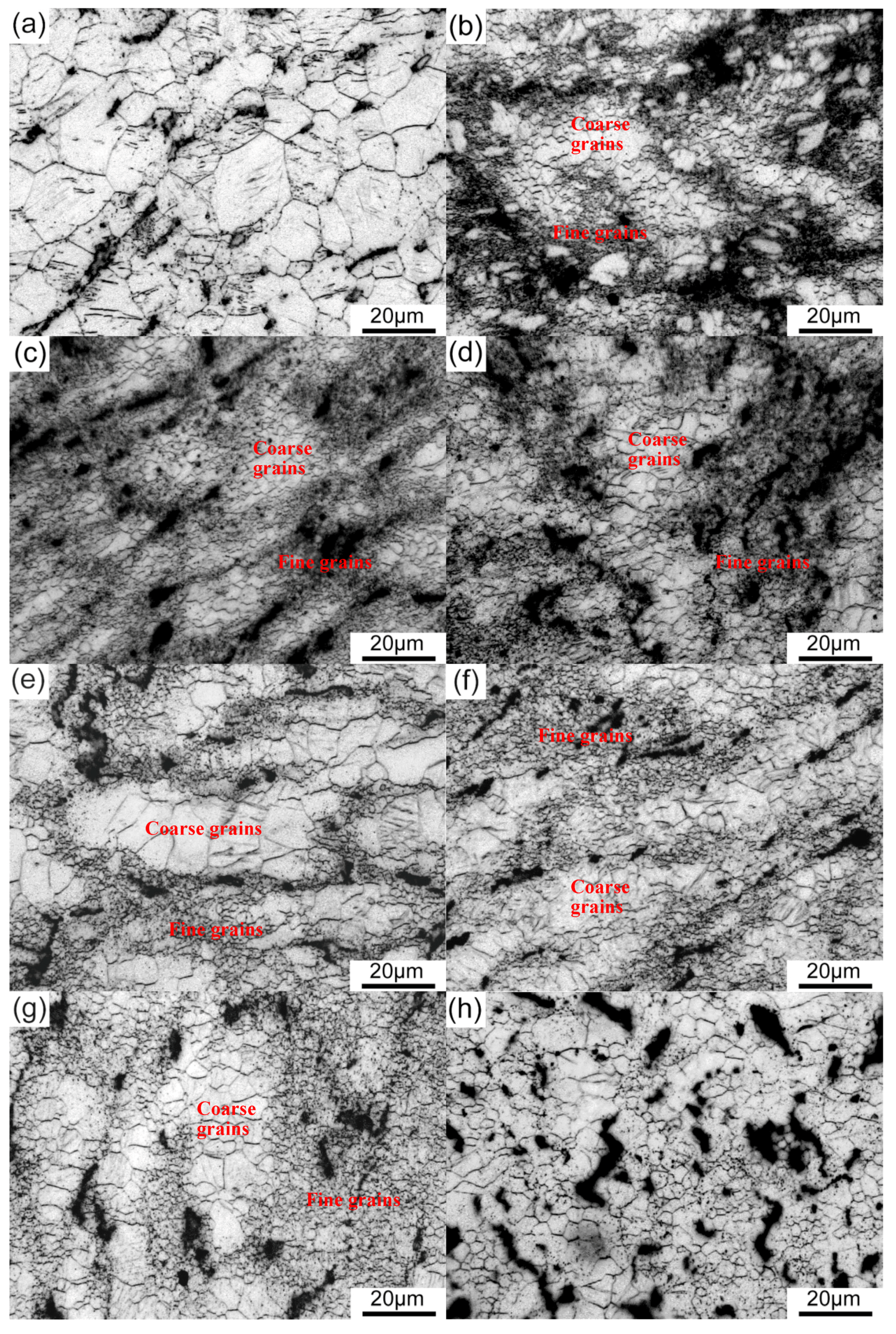
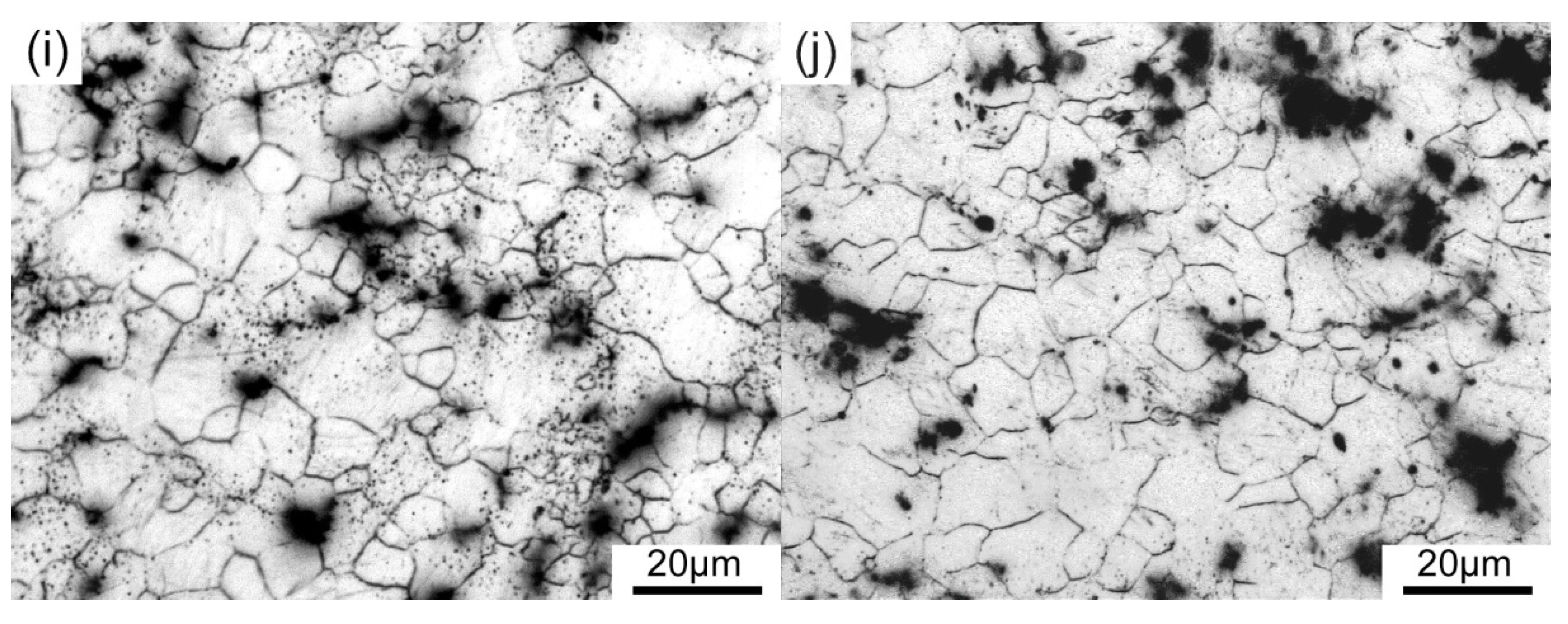

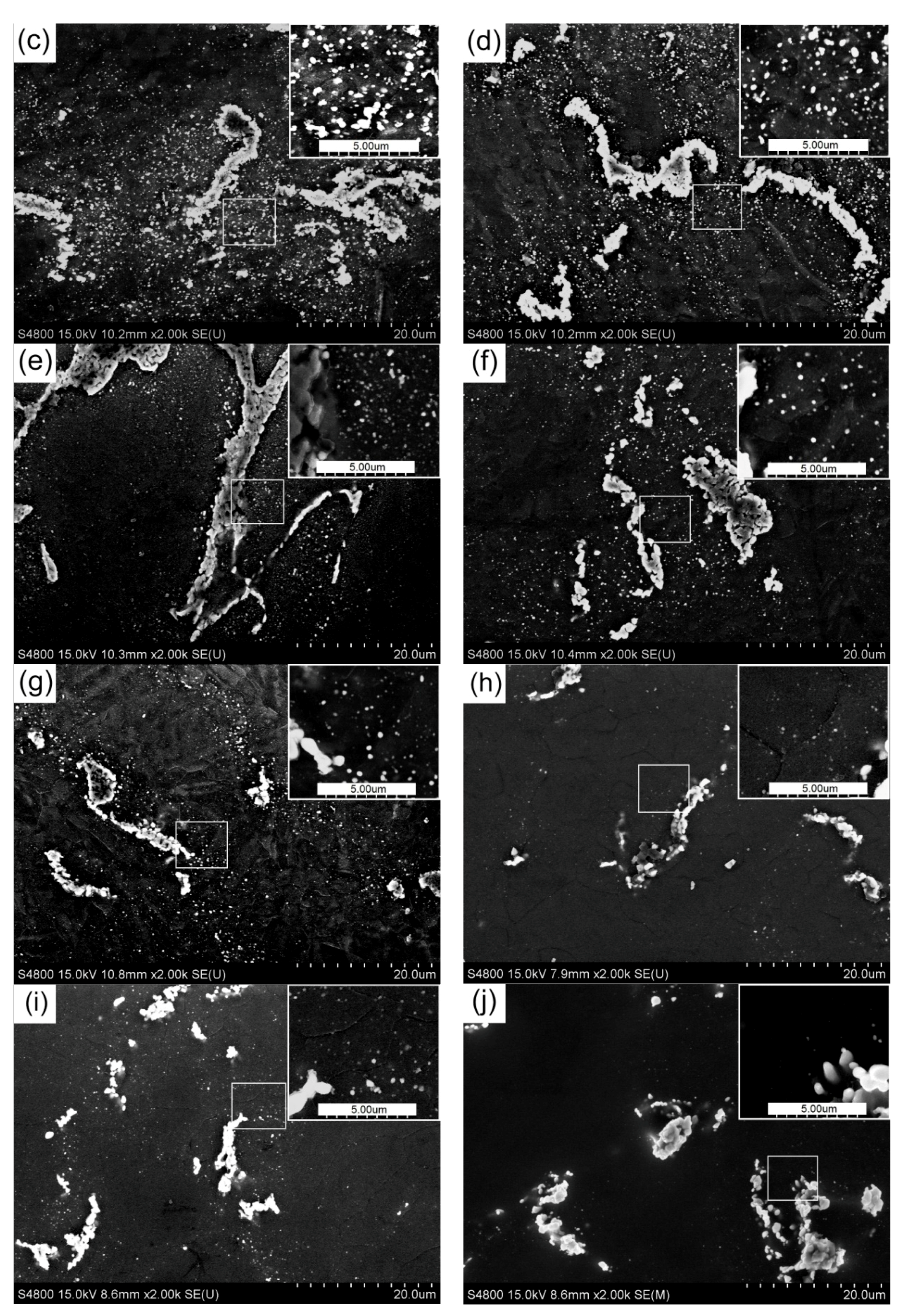

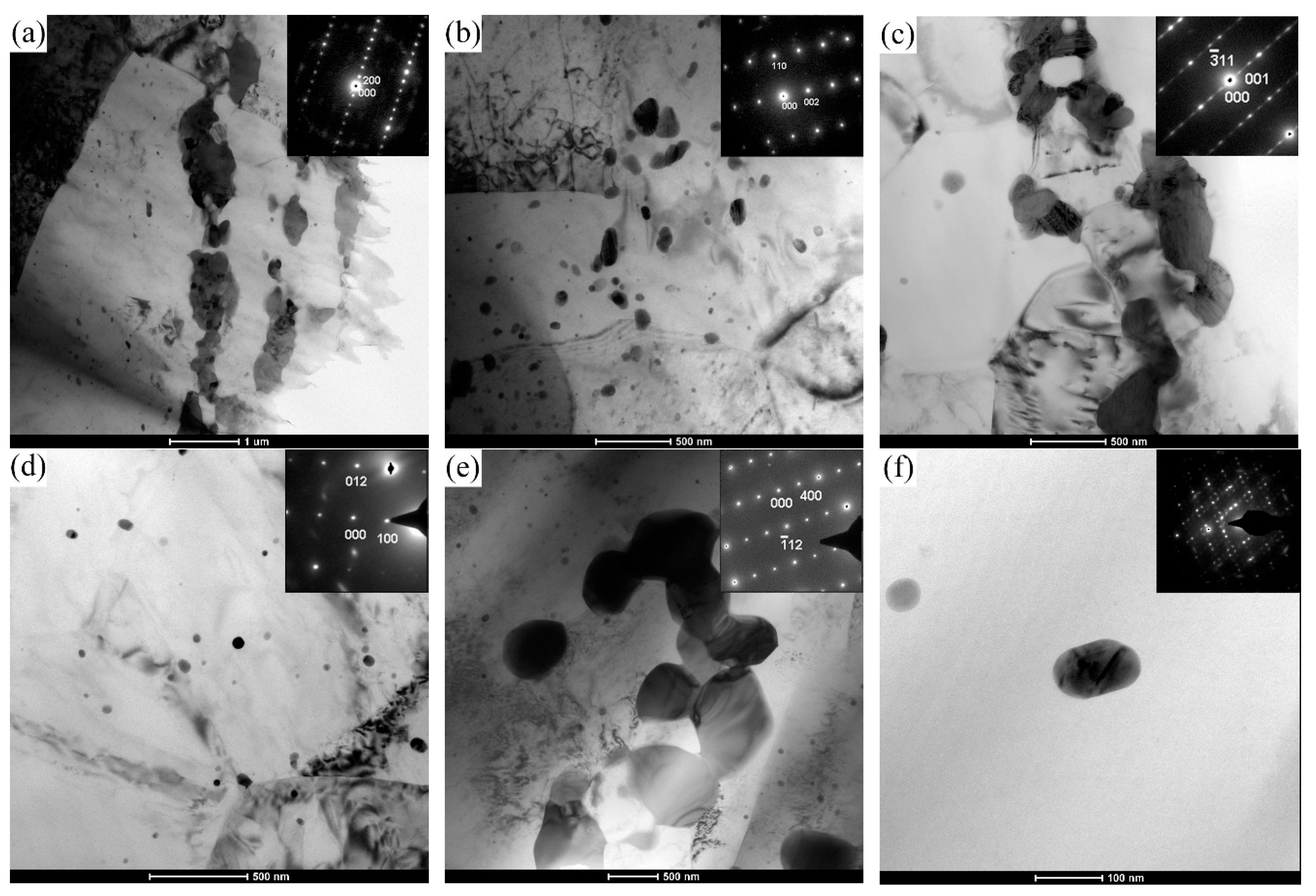
© 2018 by the authors. Licensee MDPI, Basel, Switzerland. This article is an open access article distributed under the terms and conditions of the Creative Commons Attribution (CC BY) license (http://creativecommons.org/licenses/by/4.0/).
Share and Cite
Yan, J.; Qin, Z.; Yan, K. Mechanical Properties and Microstructure Evolution of Mg-6 wt % Zn Alloy during Equal-Channel Angular Pressing. Metals 2018, 8, 841. https://doi.org/10.3390/met8100841
Yan J, Qin Z, Yan K. Mechanical Properties and Microstructure Evolution of Mg-6 wt % Zn Alloy during Equal-Channel Angular Pressing. Metals. 2018; 8(10):841. https://doi.org/10.3390/met8100841
Chicago/Turabian StyleYan, Jingli, Zijun Qin, and Kai Yan. 2018. "Mechanical Properties and Microstructure Evolution of Mg-6 wt % Zn Alloy during Equal-Channel Angular Pressing" Metals 8, no. 10: 841. https://doi.org/10.3390/met8100841
APA StyleYan, J., Qin, Z., & Yan, K. (2018). Mechanical Properties and Microstructure Evolution of Mg-6 wt % Zn Alloy during Equal-Channel Angular Pressing. Metals, 8(10), 841. https://doi.org/10.3390/met8100841




